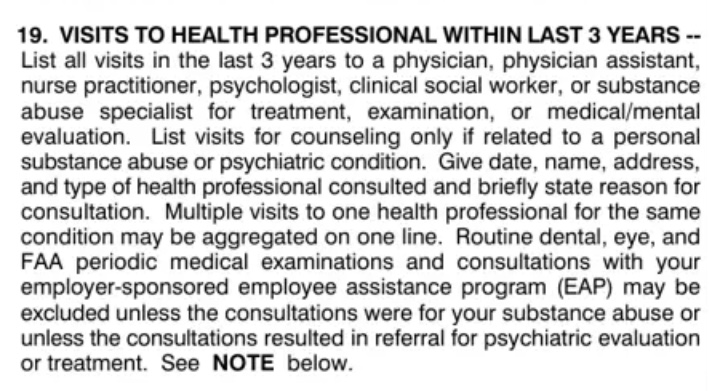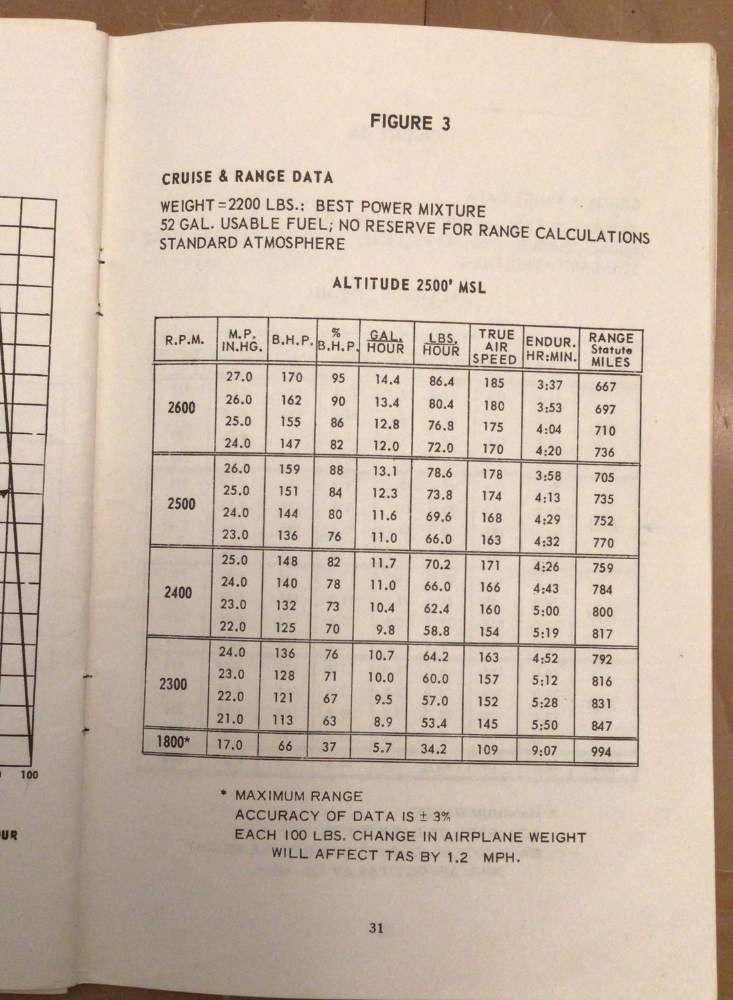-
Posts
186 -
Joined
-
Last visited
Content Type
Profiles
Forums
Blogs
Gallery
Downloads
Media Demo
Events
Everything posted by C.J.
-
excerpt from link you provided; What is the background on the FAA’s actions on OSA? The FAA has always used the special issuance medical certification process to certificate pilots with OSA. In November 2013, the FAA proposed guidance that would have required treatment for pilots with a body mass index (BMI) of 40 or more. Clearly sleep apnea & use of CPAP wasn't an issue for the FAA until 10 years after your retirement. Sorry I mis-interpreted your post. Several pilots at my airline that had been using CPAP for years told me they never self-reported their treatment on question #19 three year medical history or question #18(X) "EVER IN YOUR LIFE" "illness" medical history, which is the other catch-all on Form 8500-8. None of these guys would've been caught in the BMI 40+ or neck circumference dragnet. All of them had acted responsibly in addressing their medical issues but out of grave concern of losing their income wisely chose to keep FAA Aero-Medical Dept from turning it into a major Charlie Foxtrot.
-
What you self-report is up to you, but FAA Form 8500-8's question #19 is the catch-all beyond the specific medical conditions "laundry listed" in question #18.
-
@HeavyD If my plane wasn't in the shop for the next 6 weeks or so I'd fly over to KINT & let you check it out. I'm 5'11" & 185 and it's not a problem. What makes/models have you been flying so far & how were those for you?
-

Finally starting to get some wire back kn
C.J. replied to bcg's topic in Vintage Mooneys (pre-J models)
-

Finally starting to get some wire back kn
C.J. replied to bcg's topic in Vintage Mooneys (pre-J models)
-

Finally starting to get some wire back kn
C.J. replied to bcg's topic in Vintage Mooneys (pre-J models)
-

Finally starting to get some wire back kn
C.J. replied to bcg's topic in Vintage Mooneys (pre-J models)
@Echo An autopilot would've been a nice luxury, but my plane had a greater need for the upgrades I listed. Initially, replacing the Garwin cluster with a monitor was all I thought would be necessary short term. After a while it became very apparent it would need far more, and sooner, to get it where I wanted it to be. It's the risk of buying a nearly 60 year old airplane - stuff is just going to break, and at inconvenient places and times. Rather than do a little bit at a time I elected the "pay once, cry once" path & addressed all of the known & most likely future issues. It wasn't going to get any cheaper to do if I waited. My longest flights are usually in the 3 hour range, and in VFR, so not having an A/P isn't really much of a hardship. Truth be told I've never flown a single engine airplane equipped with an autopilot, so there's that too. You can't miss what you've never had. -

Finally starting to get some wire back kn
C.J. replied to bcg's topic in Vintage Mooneys (pre-J models)
@bcg Nice!! The shop has had my '65 since August 13th. Goodbye shotgun panel to an 8 pack. GI275 HSI w/ GMU11, GNC355, GNC255, GI275 CDI, GTX327, EI CGR-30P & C and of course a new custom panel. -

Finally starting to get some wire back kn
C.J. replied to bcg's topic in Vintage Mooneys (pre-J models)
@bcg What's the panel plan, 6 pack or glass? -
@av8or99 Just had the Plane Power SAL12-70 put in last week. Nice unit and it's 2 &1/2 pounds lighter.
-
@Bobaran I'd think p/n 158-01000 is your best bet. I had mine replaced at annual in April due the cotter pin scoring the inside of them. I bought a pair of salvaged ones for $170 from Wentworthaircraft.com Brand new price was $500 for just one from a source I can't remember anymore. Fifteen dollars is way better than $170 but metal is way better than plastic. Just my .02 cents.
-
@hammdo Well, here in sunny & humid North Carolina we haven't seen triple digits yet, thank God, but most of my summer flights are at OATs between 88 - 94*F at density altitudes between 2500' - 3000' and it's just me in the plane tipping the scale at no more than 2200 lbs. My doghouse is super tight & I do have the LASAR cowl fairing (don't know if it contributes much, but it is there). C.J.
-
@Hank Also when comparing your 1970's #s to my 1965 #s going with apples to apples, for the same weight of 2200 lbs your figures for less the 75% power are at lean mixture while mine are at best power mixture.
-
@Hank My guess is that in 1965, Mooney chose the MA-4-5, 10-3878 version which had a lower T/O fuel flow. By 1970 Mooney smartened up and equipped with the higher fuel flow 10-4164-1 version to help with high CHTs. My 65C has the higher fuel flow version most likely because the engine I have was built new in 1978 and replaced the original engine from 1965.
-
@hammdo With exception of fuel flow, which I'M not currently equipped with, your numbers are near identical to mine with Power Flow.
-
@Hank In 1965 Mooney didn't include a Sea Level, 59*F page in the POH. The first "cruise & range" data in my POH is at 2500 ft, STD Atmosphere. Those fuel flow figures were the specification for the 10-4164-1 carb I got directly from a conversation with Marvel Schebler. I'm not currently equipped with fuel flow, but by the end of September that will change and I will also have an overhauled carburetor from D&G too. Right now I'm taking it one (or two) steps at a time so we'll see what the numbers are then and decide if anything more needs to be done. This summer's CHTs were no greater than 390*F at takeoff & during climb so I'm thinking I'm OK.
-
@philiplane Thanks for the additional info in your edit. Cooling is very good at 390*F @T/O power on the hottest of days. All I've done since starting this thread maintenance-wise is to send the carb to D&G for overhaul. It's never been done in 45 years believe it or not. Never really had any issues with the carb though.
-
@philiplane I already had a conversation with Marvel Schebler on 21 August. The upper & lower specs for the 10-4164-1 are 100.5 PPH (16.75 GPH) at full throttle and 4.8 PPH (0.8 GPH) at idle.
-
@kortopates Well, given there was no specific logbook entry of the carb receiving an overhaul at the same time the engine was overhauled I did some detective work. 1) A quick email to and very fast response from Lycoming confirmed my carb's s/n was the same one installed when they manufactured the engine in November 1978 and 2) a 5-minute phone call to the mechanic who field overhauled the engine in 2020 confirmed he did not get the carb overhauled due excessive/indefinite delays from D&G, with not even core exchanges being possible. This was back when the Covid19 crisis was emerging. So bottom line is my 45-year-old carburetor was shipped to D&G with an expected 2 week return and given they'll have tested it I'll know what my 10-4164-1 full throttle fuel flow is.
-
Should have used the word "accurate", but I get your point. With any luck I'll have takeoff fuel flow numbers for my C model by the end of September.
-
@jetdriven Who was reaming the carb & swapping jets, Power Flow, Marvel or was it D&G ?
-
@DXB Food for thought in case you haven't already done this - After I had every seam, gap & hole on the doghouse sealed with RTV there was a 30*F decrease of CHT (390 versus 420) as well as oil temp (190 versus 200). I still transition to a 120 mph climb at 500' agl like I did before sealing the gaps, but now I'm always below 400*F even on the hottest summer day.
-
@Greg Ellis Your FF numbers may very well be correct. According to Power Flow even two individual carburetors, a single serial number apart, can have very different fuel flows at WOT & idle. So if your FF numbers are generally in synch with what you crosscheck with actual fuel burned upon refueling, I'd guess there's not an issue if that's your delta versus the WOT spec.
-
@Greg Ellis Just sharing some info from my conversation today with Marvel Schebler. Do with it what you will, I am not an A&P. They said that the upper & lower specs for the 10-4164-1 are 100.5 PPH (16.75 GPH) at full throttle and 4.8 PPH (0.8 GPH) at idle. I spoke with Power Flow as well & they said that when I do get my fuel flow installed to do several flights and adjust the K Factor as necessary. For anyone reading this who is Power Flow equipped they provided me with an Engine “Richness” Test for Constant Speed Propeller aircraft to determine if my engine is rich enough or not. So if you haven't done this already and are interested just check the attached the PDF file carb rich test constant speed.pdf











